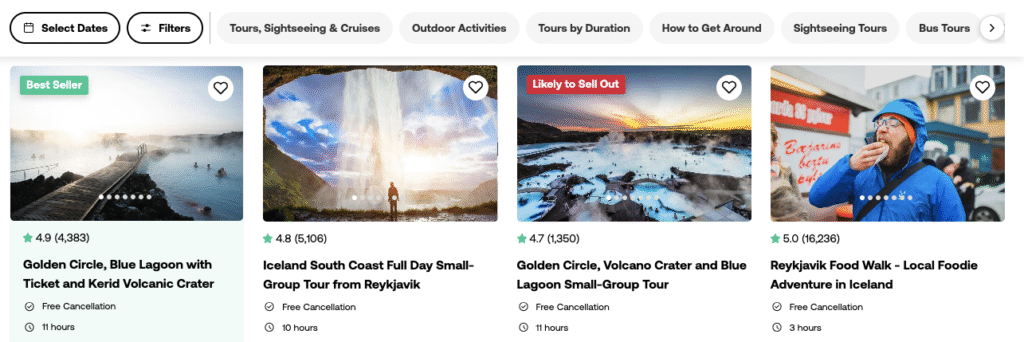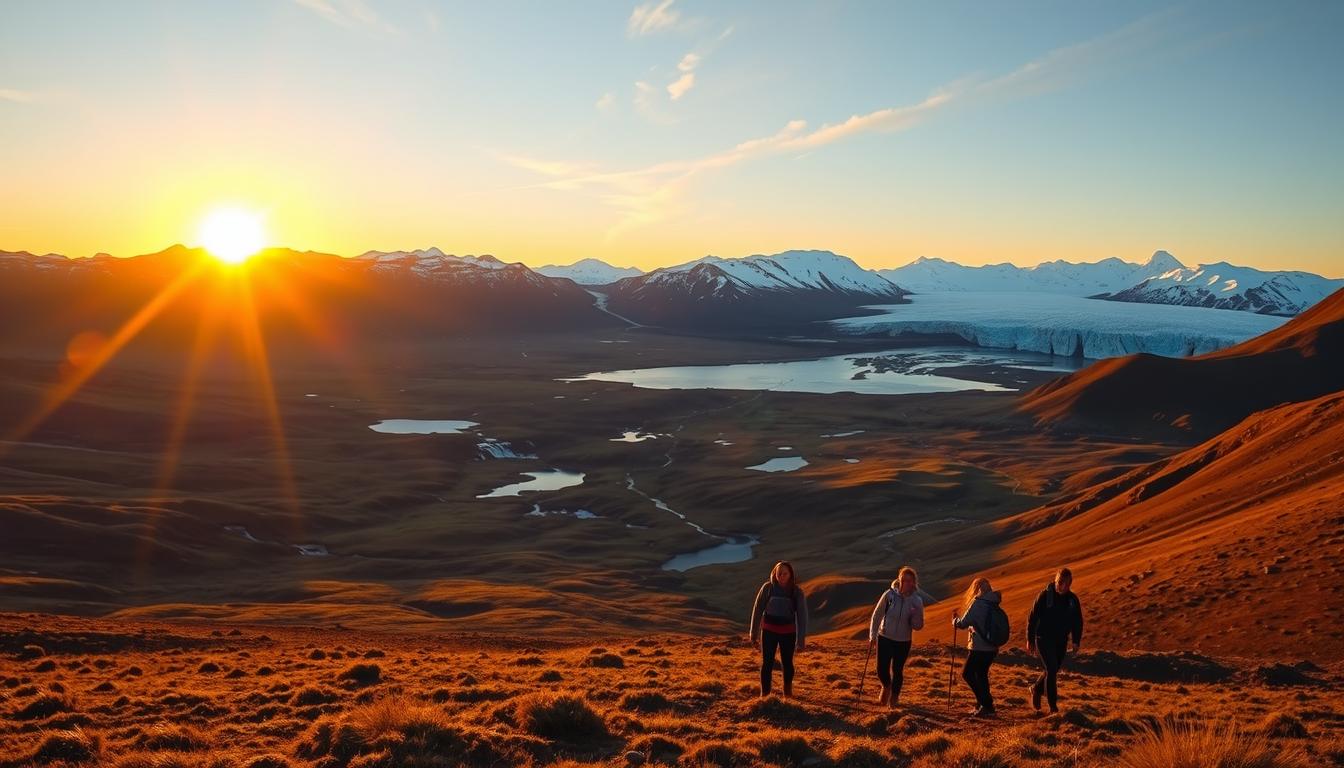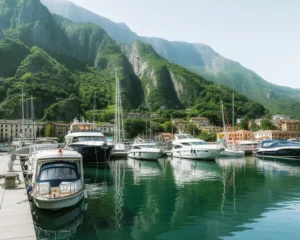Iceland Travel Tips: Choosing the Best Time for Your Adventure
Table of Contents
Have you ever wondered how Iceland’s dramatic seasons can transform your travel experience? This land of fire and ice offers something unique every month, but planning your trip requires careful thought. From the mesmerizing northern lights to the endless daylight of summer, each season brings its own magic and challenges.
Weather plays a huge role in shaping your adventure. Winter months are perfect for chasing auroras, but the cold and limited daylight can be daunting. Summer, on the other hand, offers mild weather and access to remote areas, though it comes with higher costs and crowds.
Balancing your priorities is key. Are you here for the northern lights, whale watching, or glacier hikes? Your preferences will determine the best time to travel to Iceland. Additionally, factors like budget and F-road accessibility should influence your decision.
Key Takeaways
- Iceland’s seasons drastically impact travel experiences and activities.
- Winter is ideal for northern lights but comes with shorter daylight hours.
- Summer offers mild weather and access to remote areas but can be crowded.
- Your preferred activities should guide when you visit Iceland.
- Consider budget and weather volatility when planning your trip.
Introduction to Iceland’s Seasonal Appeal
Every season in Iceland brings its own magic, making it a year-round destination for adventurers. Whether you’re chasing the northern lights or basking in the midnight sun, this country offers unforgettable experiences no matter when you visit.
Summer, from June to August, is the high season. During this period, you’ll enjoy nearly 24-hour daylight, perfect for exploring remote areas and hiking trails. However, it also means larger crowds and higher prices. Winter, from November to April, is ideal for aurora hunters, though shorter daylight hours and colder temperatures can be challenging.
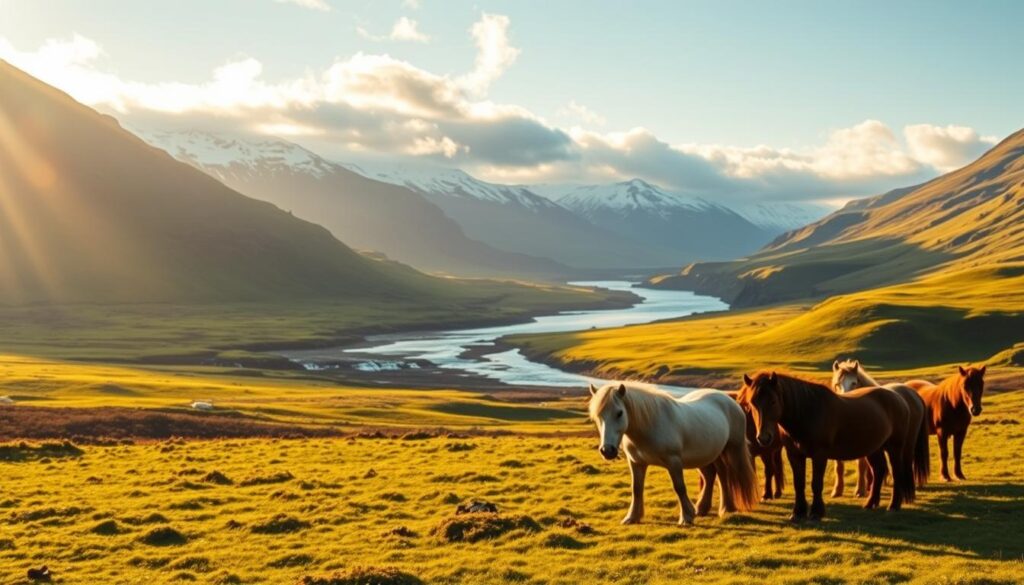
Shoulder seasons—May and September to October—are a sweet spot. You’ll encounter fewer tourists, moderate weather, and lower costs. These months are great for those who want a balance between accessibility and affordability.
Low season has its perks too. Flights and accommodations are cheaper, and the chances of seeing the northern lights are higher. Just be prepared for unpredictable weather and limited access to some areas, especially F-roads, which often require a 4×4 vehicle.
Despite its compact size of 103,000 km², Iceland boasts diverse microclimates. This means weather conditions can vary significantly across the country, even within the same season. Planning ahead ensures you’re ready for whatever the year throws your way.
Understanding Iceland’s Climate and Weather Patterns
Iceland’s climate is as dynamic as its landscapes, offering a mix of extremes. Known for its “four seasons in one day” phenomenon, the weather here can change rapidly. This unpredictability adds to the adventure but also requires careful planning.
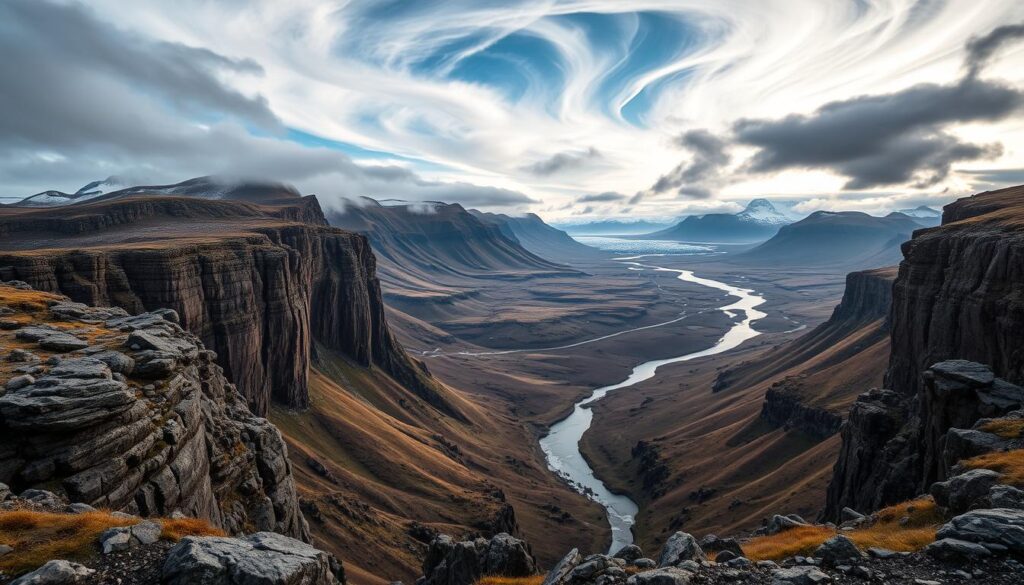
Winter and summer are the two most distinct seasons, each with its own challenges and rewards. Whether you’re braving the cold or enjoying the midnight sun, understanding these patterns ensures a smoother trip.
Winter Weather in Iceland
Winter in Iceland is characterized by cold temperatures and limited daylight. From November to February, you’ll only have 4-5 hours of daylight each day. Snowstorms are frequent, and wind chill can make temperatures feel 10-20°F colder than they actually are.
March offers a slight reprieve, with temperatures ranging from 29°F to 38°F and up to 12 hours of daylight. However, the weather remains volatile, so layering is essential.
Summer Weather in Iceland
Summer brings milder weather and the famous midnight sun. From June to August, you’ll experience 20-24 hours of daylight, perfect for extended exploration. July averages 48°F-56°F, but rain occurs on about 40% of days.
Microclimates add another layer of complexity. Coastal areas can be 10°F warmer than the highlands, so packing versatile clothing is a must.
| Season | Temperature Range | Daylight Hours | Key Features |
|---|---|---|---|
| Winter | -2°C to +2°C | 4-5 hours | Snowstorms, northern lights |
| Summer | 9°C-13°C | 20-24 hours | Midnight sun, mild weather |
Best Time to Travel to Iceland for Northern Lights
Chasing the northern lights in Iceland is a bucket-list experience for many travelers. The aurora borealis paints the night sky with vibrant hues, creating a magical spectacle. To maximize your chances of witnessing this phenomenon, timing is everything.
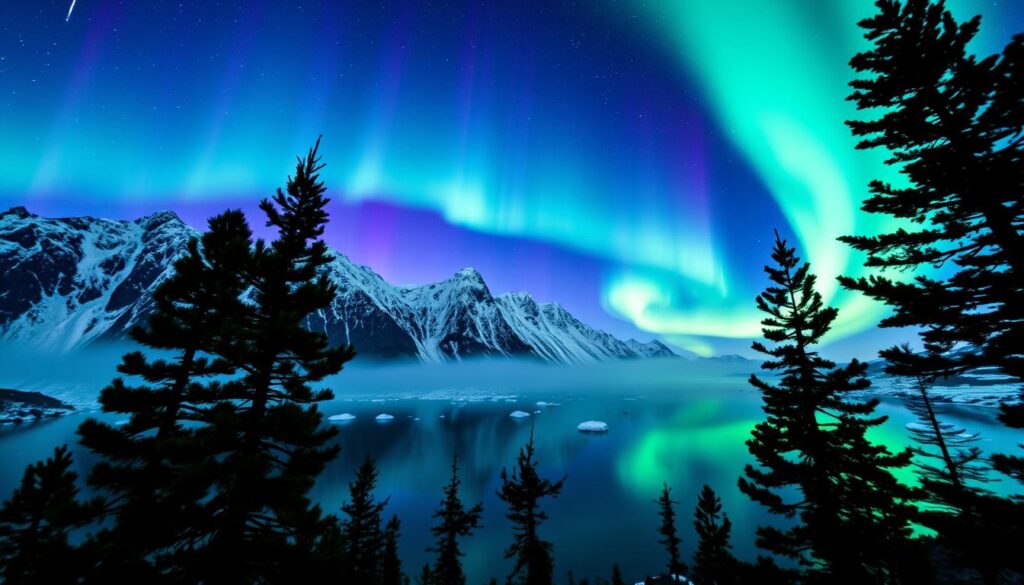
Optimal Months for Aurora Viewing
The northern lights are most active from September to March. During these months, the nights are long and dark, providing the perfect backdrop for the aurora. December to March offers the highest activity, with December being the darkest month. September and October are less crowded, with clearer skies and milder weather.
Tips for Spotting the Northern Lights
Here are some practical tips to help you see northern lights in Iceland:
- Check the aurora forecast on Vedur.is for real-time updates on solar activity and cloud cover.
- Join guided tours that provide thermal suits and photography expertise to capture the perfect shot.
- Escape light pollution by heading to remote areas like Thingvellir National Park or the Snaefellsnes Peninsula.
For example, March visitors have a 68% success rate of spotting the aurora, compared to 45% in November. Plan your trip around these tips to make the most of your lights iceland experience.
Best Time to Visit Iceland for Whale Watching
Whale watching in Iceland is an unforgettable experience that connects you with nature’s giants. The country’s nutrient-rich waters attract over 23 species, offering incredible opportunities to see these majestic creatures up close. Whether you’re a first-timer or a seasoned enthusiast, Iceland’s whale watching scene won’t disappoint.
Whale Species and Their Seasons
Different whale species appear throughout the year, making Iceland a year-round destination for marine enthusiasts. In April, minke whales start appearing in Faxaflói Bay. By June and July, blue whales can be spotted near the Reykjanes Peninsula. August is the peak season for humpbacks, with a 98% success rate in Skjálfandi Bay.
Top Whale Watching Locations
Iceland boasts several prime spots for whale watching. Reykjavík offers year-round minke whale tours, perfect for a quick adventure. Snæfellsnes is known for orca pods from January to April. Húsavík, often called the “Whale Capital,” provides premium 3-hour tours during the summer months, where humpbacks and orcas are frequently seen.
Whether you’re on a boat tour in Reykjavík or exploring the waters of Húsavík, Iceland’s whale watching experiences are sure to leave you in awe. Plan your trip around these seasons and locations to make the most of your adventure.
Best Time to Explore Iceland’s Glaciers
Exploring Iceland’s glaciers offers a unique blend of adventure and natural beauty. These icy giants are accessible year-round, but the conditions vary significantly by season. Whether you’re hiking or exploring ice caves, timing your visit ensures a safe and memorable experience.
Glacier Hiking Conditions
March is ideal for glacier hikes, offering stable surfaces perfect for crampons. During winter, the ice is firm, reducing the risk of slush that’s common in summer. Svínafellsjökull Glacier is a popular spot, with tours available year-round, except on stormy days.
Ice Cave Accessibility
Ice caves are a winter wonder, accessible from November to March. Katla Ice Cave is open from October to April, requiring a Super Jeep for access. The Crystal Cave is only accessible from November to March. Note that summer cave collapses have increased by 300% since 2015, making winter the safest time to visit.
- Hiking: March offers the best conditions, with stable ice and fewer risks.
- Ice Caves: November to March is the prime season for exploring these natural wonders.
- Safety: Avoid summer visits to ice caves due to higher collapse risks.
Best Time to Visit Iceland for Hiking
Iceland’s rugged terrain offers some of the most breathtaking hiking trails in the world. From volcanic craters to glacial valleys, the country’s diverse landscapes provide endless opportunities for exploration. However, timing your trip is crucial to ensure the best experience.
Popular Hiking Trails and Their Seasons
Iceland’s trails vary in accessibility depending on the season. The Laugavegur Trail, one of the most famous routes, is open from July to September. This 55-kilometer trek takes you through colorful rhyolite mountains, geothermal areas, and black sand deserts.
Landmannalaugar, a starting point for many hikes, is accessible from July 1 to September 15. For those seeking coastal adventures, the Hornstrandir Nature Reserve is open from June to mid-August. Fimmvörðuháls, a trail connecting two glaciers, is accessible from May to October, depending on snowmelt.
Weather Considerations for Hikers
Iceland’s weather can be unpredictable, even in summer. Wind speeds on highland trails average 12-18 mph (20-29 kph), making waterproof layers essential. Temperatures can drop suddenly, so layering is key to staying comfortable.
F-roads, which lead to many remote trails, are typically open from June to August. These roads require a 4×4 vehicle and careful planning. Always check the forecast before heading out, as conditions can change rapidly.
- Trail Calendar:
- Landmannalaugar: July 1-Sep 15
- Hornstrandir Nature Reserve: June-mid August
- Fimmvörðuháls: May-Oct (varies by snowmelt)
- Gear Tips:
- Waterproof layers are mandatory, even in summer.
- Windproof jackets and sturdy boots are essential for highland trails.
Whether you’re tackling the Laugavegur Trail or exploring coastal paths, Iceland’s hiking routes promise unforgettable days of adventure. Plan ahead, pack wisely, and embrace the challenges of this stunning landscape.
Best Time to Visit Iceland for the Midnight Sun
Witnessing the midnight sun in Iceland is a surreal experience that defies the usual rhythm of day and night. From late June to mid-July, the sun barely dips below the horizon, bathing the landscape in a golden glow. This phenomenon offers endless opportunities for exploration and adventure.
During this period, you’ll experience nearly 24 hours of daylight, making it possible to enjoy activities at any time. Whether you’re hiking, kayaking, or simply soaking in the scenery, the extended sunlight allows for flexibility in your itinerary.
Experiencing 24-Hour Daylight
The peak of the midnight sun occurs between June 20 and July 20, with June offering up to 96% daylight. This is the perfect time to explore Iceland’s natural wonders without the constraints of a typical day-night cycle. The constant light creates a magical atmosphere, ideal for photography and outdoor adventures.
Activities During the Midnight Sun
Here are some unique experiences you can enjoy during this period:
- Golfing at 2 AM: Brautarholt Golf Course offers a one-of-a-kind experience under the midnight sun.
- Midnight kayaking: Paddle through Jökulsárlón Glacier Lagoon in the soft, golden light.
- Photography advantage: The extended golden hour lasts over four hours, perfect for capturing stunning landscapes.
While the midnight sun is enchanting, it can disrupt sleep patterns. Around 73% of visitors report sleep disturbances. To combat this, consider using blackout masks or adjusting your schedule to align with the extended daylight.
Best Time to Visit Iceland for Puffin Watching
Iceland’s puffins are a charming highlight for nature enthusiasts. These colorful seabirds, with their distinctive beaks and playful behavior, are a delight to observe in their natural habitat. Planning your trip around their breeding season ensures the best chances of spotting them.
Puffin Breeding Season
Puffins are most active in Iceland from May 1 to August 20. During this period, they nest on cliffs and islands, making it easier to see them up close. Late May marks the start of egg laying, while mid-August is when chicks begin to fledge.
Látrabjarg Cliffs, for example, host 40% of the global puffin population. This makes it one of the most rewarding spots for puffin watching. The cliffs provide a safe haven for these birds, offering visitors a chance to witness their daily activities.
Top Puffin Watching Spots
Iceland offers several prime locations for puffin watching. Here are some of the best:
- Westman Islands: Known for its boat tours, this area is home to over 500,000 puffins. The tours provide a unique perspective, allowing you to see these birds in their natural environment.
- Borgarfjörður Eystri: This spot features elevated cliffs with 30-meter viewing platforms. It’s perfect for those who prefer a more stationary observation point.
- Lundey Island: Just a 25-minute boat ride from Reykjavík, this island is a convenient option for those short on time.
Whether you’re on a boat tour or standing on a cliff, puffin watching in Iceland is an unforgettable experience. Plan your visit during the breeding season to make the most of this unique opportunity.
Best Time to Visit Iceland for Avoiding Crowds
If you’re looking to escape the hustle and bustle, Iceland’s off-season offers a serene escape. From November to April, the low season sees 60% fewer tourists, making it the perfect time to explore without the crowds. You’ll also enjoy significant savings, with hotel discounts averaging 40%.
Low Season Travel Benefits
Traveling during the low season comes with unique advantages. Popular sites like the Golden Circle are 80% less crowded, allowing you to fully immerse yourself in the experience. Entry times to iconic spots like the Blue Lagoon are more flexible, so you can enjoy these attractions at your own pace.
Tips for Traveling in the Off-Season
To make the most of your trip, consider these strategies:
- Rent a 4×4 vehicle: From October to April, many roads require a 4×4 for safe travel, especially in remote areas.
- Book “Northern Lights Wake-Up Calls”: Many hotels offer this service to alert you when the auroras are visible, ensuring you don’t miss this magical experience.
- Take advantage of lower costs: For example, February hotel rates average $120, compared to $280 in July, making it a budget-friendly option.
By planning your trip during the off-season, you’ll enjoy Iceland’s beauty with fewer tourists and more affordable flights and accommodations. It’s the ideal way to experience this stunning country on your own terms.
Best Time to Visit Iceland for Budget Travelers
Traveling to Iceland doesn’t have to break the bank if you choose the right months. With careful planning, you can enjoy this stunning destination without overspending. Timing your trip during the affordable travel months ensures you save on flights, accommodations, and activities.
Affordable Travel Months
September to November is the sweet spot for budget travelers. During these months, you can save up to 50% on flights compared to peak summer rates. Camping is also a great option, with costs as low as $80 per day for gear and permits.
Here’s a quick cost calendar to help you plan:
- January: 60% off rental cars, making it ideal for road trips.
- October: Roundtrip flights from NYC average $600, a steal for international travel.
Budget-Friendly Activities
Iceland offers plenty of free or low-cost activities to stretch your budget. Here are some top picks:
- Reykjadalur Hot Spring Hike: A scenic trek ending in a natural hot spring, completely free.
- Reykjavík’s City Card: For $35, enjoy 24-hour access to museums, pools, and public transport.
- Northern Lights Self-Drive Tours: Skip the guided tours and chase the auroras on your own schedule.
| Month | Savings Highlight | Activity Suggestion |
|---|---|---|
| January | 60% off rental cars | Golden Circle road trip |
| October | $600 roundtrip flights | Whale watching in Húsavík |
By planning your trip during these months and taking advantage of affordable options, you can experience Iceland’s wonders without straining your wallet. Whether it’s hiking, exploring museums, or chasing the northern lights, there’s something for every budget.
Best Time to Visit Iceland for Road Trips
Iceland’s roads offer a gateway to some of the most stunning landscapes on Earth. Whether you’re cruising along the Ring Road or venturing into the highlands, timing your trip ensures a smooth and memorable journey. Understanding seasonal conditions and planning your route are key to making the most of your adventure.
Road Conditions and Accessibility
Iceland’s roads vary significantly by season. The Ring Road, circling the island, is open year-round and provides access to many iconic sites. However, highland roads, known as F-roads, are only accessible from June to August due to snow and ice. During winter, even main routes can be challenging, with icy patches and sudden storms.
July is the ideal month for highland exploration, as all F-roads are open. In October, you’ll find fewer tourists and stunning fall foliage in areas like Þórsmörk valley. Always check road conditions on Vegagerdin.is before heading out, especially in winter.
Scenic Routes and Stops
Iceland’s scenic routes are a highlight of any road trip. The 7-Day Ring Road itinerary covers 1,332 kilometers, taking you through waterfalls, glaciers, and volcanic landscapes. For a shorter trip, compare the Diamond Circle and Golden Circle—both offer breathtaking stops but cater to different interests.
- Ring Road: Perfect for a comprehensive tour of Iceland’s highlights.
- Diamond Circle: Focuses on the north, including Lake Mývatn and Dettifoss waterfall.
- Golden Circle: Ideal for first-time visitors, featuring Þingvellir National Park and Geysir.
No matter which route you choose, keep emergency numbers handy. Dial 112 for road assistance if needed. With careful planning, your Icelandic road trip will be an unforgettable experience.
Conclusion: Choosing the Best Time for Your Icelandic Adventure
Planning your Icelandic adventure requires aligning your goals with the right season. Whether you’re chasing the northern lights, hiking glaciers, or exploring puffin colonies, your priorities will shape the ideal time to visit. With 78% of repeat visitors choosing different seasons for their trip, consider splitting your journey across months like September and June to experience the country’s diverse charms.
Use essential apps like Vedur.is for weather updates, SafeTravel.is for safety alerts, and Parka for parking. These tools ensure a smooth and informed journey. Don’t forget travel insurance to protect against weather disruptions, especially in this dynamic year-round destination.
By matching your activities to optimal months and staying prepared, you’ll make the most of your Icelandic adventure. Whether it’s your first visit or a return trip, Iceland’s ever-changing beauty awaits.
Top 5 Microcations to Recharge your Mind and Soul
All Iceland Tours & Excursions in 2025
